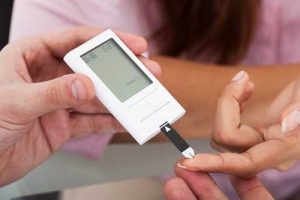What is glucose? It is a form of sugar and is present in foods high in carbohydrates like potatoes, rice, bread, fruit, grains, and sugars. Glucose is necessary to the human body, which uses it for energy. It’s like the gasoline in a car: it keeps us going just as gas keeps a car going.
Get checked for diabetes
When a person has diabetes, the pancreas, which makes insulin, the hormone that helps move glucose into the body’s cells, no longer works properly. The diabetic’s cells are no longer able to absorb the right amount of glucose.
It may be helpful to visualize these cells as being like a waterlogged sponge: they can’t take in any more glucose and begin to break down. One of the first symptoms a diabetic may notice is overwhelming thirst. If you are always feeling thirsty, it is a good idea to get checked for diabetes.
Diabetes must be managed carefully since too much glucose in the blood can create a loss of feeling in hands and feet, and eventually lead to amputations. Other long-term consequences of a high glucose level can include blindness, high blood pressure, and heart and kidney failure.
Keep your glucose level under control
Fortunately, we live in a time when insulin and other treatments are available. If the level of glucose in the blood can’t be controlled with exercise and diet, a doctor can prescribe insulin to take the place of the insulin the body can no longer make or absorb.
Essential to good blood sugar control is a glucose monitor, which your doctor will prescribe. The glucose monitor requires a tiny amount of blood, taken from the finger or some other site with a very small lancet. People get accustomed to doing this quickly, difficult as it sounds at first.
More: 8 Crucial Reasons to Give Up Sugar
Every three months or so, your doctor will take a fasting blood sugar – blood taken in the morning before you eat -and test it to see how much sugar has been in your blood over that period of time. This is called the Hemoglobin A1C test.
Presently, the standard level for a “good” A1C, as determined by the American Diabetes Association, is less than 7%; others feel that 6.5% is even better. Above 7%, diabetes is considered out of control. If you have a level above 7%, your doctor will no doubt recommend changes in medicine and lifestyle.
Manage your weight
Every diabetic should, if possible, try to control the glucose level with diet and exercise. A recent study showed that even a weight loss of 10 or 15 pounds could help lower blood pressure, lower blood sugar, and may even make it possible to cut down on diabetic medicine. As ever, check with your doctor before beginning a weight loss and exercise program.
Consider diabetes risk factors
There are more and more diabetics in the U.S. each year: a gain of 25% in the last 20 years, according to the Obesity Society. Both type 1 and type 2 diabetes are much more prevalent in our society today. In type 1 diabetes the pancreas doesn’t make insulin, even in childhood, and the diabetic must take insulin.
Type 2 normally comes on later in life, although recently many more overweight children have been getting the disease. Genetics plays a role as well: if diabetes runs in the family, or if a woman has a baby over 9 pounds, or develops “gestational diabetes” (diabetes while pregnant), there is a higher chance of getting the disease.
If you are diabetic, it is extremely important to eat healthy foods, such as vegetables and fruits, and to get more active (a little at a time). There are many organizations that can give good advice on diet and exercise programs to lower glucose in the blood and manage diabetes in general.
Many hospitals offer diabetes support groups, normally for free, where you can meet others with information to share and emotional help to exchange.
More: 9 Things to Throw Away to Boost Your Health
Understand the role of glucose
The role of glucose in the lives of diabetics is not as simple as just keeping blood sugar low. Diabetics also experience hypoglycemia – low blood sugar, which can, if it is not treated, create a diabetic coma.
If you feel shaky, nauseous, anxious, or have a racing pulse, test your blood with your glucose meter to see if your levels are low (or high). Many diabetics carry candy or glucose tablets with them to raise low blood sugar; you can also drink orange juice. If the symptoms are severe, and you are concerned about passing out, call 911 at once.
Taking care of your needs and paying attention to health can drive away many of the demons of this disease. Watch your glucose levels, eat well, and get some exercise. Also, have a good time doing things you like. Whatever you do, don’t let diabetes keep you from enjoying friends, family, and the real sweetness of life.







